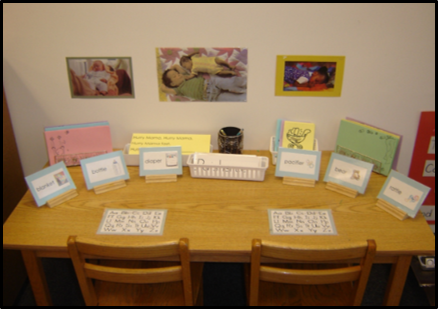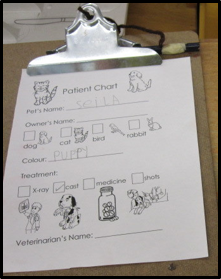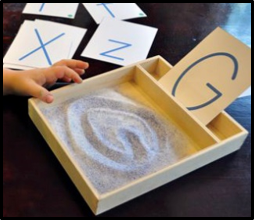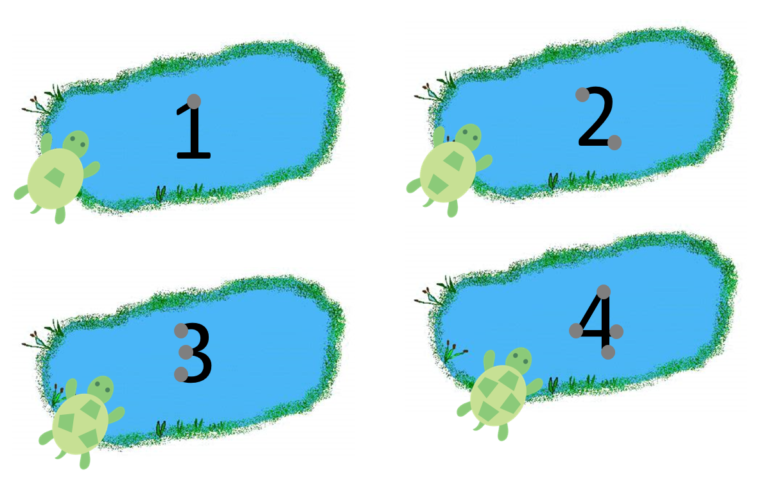To Trace or Not to Trace?
Of all the topics about preschool literacy that I teach, the most hotly debated among teachers is that of tracing. A simple google search on preschool writing or curriculum ideas will no doubt result in some form of tracing. In fact, even some handwriting curricula encourage the practice. Whenever I introduce the idea of no tracing activities in the classroom, I am often met with a barrage of arguments defending the practice. Some teachers are so tied to this practice that they almost become angry at the idea of giving it up, insisting that tracing has helped their children learn to write.

After years of observing children as they learn to write, I suggest that asking children to trace alphabet letters actually does more harm than good. The typical tracing activities involve broken line letters to help children make a “correct” letter. The problem with this is that children pay more attention to the broken lines than the actual letter and letter shape. In their attempts to connect the lines, they start at random places to connect the lines, go repeatedly over their marks to ensure the broken lines are completely covered, and often create letter shapes that do not have a written fluency to them. These actions, if repeated enough times, will result in habits that later interfere with both legibility, muscle memory, and writing fluency.
Although the end product may result in a letter that seems satisfactory, it is likely that the lines were traced back and forth and started at a point of convenience with no regard for the sequence of how to create the letter. To account for this, teachers may stand over children with specific directions of where to start and how to make the lines, resulting in low feelings of self-efficacy (i.e., I’m not good at this).
Another issue that arises with tracing involves the control that it takes to stay within the lines. In order to hold a pencil correctly and make letters correctly one has to develop the small muscles within the wrists, hands, and fingers. If a child is struggling to hold a pencil correctly or stay within lines on a paper, this is a clue that the child’s fine motor skills need to be more developed. The best way to develop these skills is by giving the child more manipulative activities, such as searching for pony beads in playdough, picking up small pieces using a pincer grasp, or using puzzles with small knobs. I’ve seen many teachers attempt to correct the pencil grip of a child only to see the child revert back to the “comfortable way” after the teacher walks away. This demonstrates that the correction of pencil grip does nothing to promote control…rather the teacher must look to see what is causing the issue to begin with.

When children have the fine motor control to create letters free hand that are similar in size and shape on paper without lines, they now have the motor skills needed to write on lined paper. By the time children reach this point, they do not need tracing activities because they either are already making the letters or already have the skills to create recognizable letters.
This begs the question, how will children learn to write their names or letters if they don’t have tracing activities? The answer is actually quite simple. Children need many opportunities throughout the day to write freely on topics of their choosing. They need access to writing materials and blank paper. They need models of the alphabet that are on the same surface on which they are writing, name cards to look at so they can recreate the names, and words that they are interested in so they can view the model and then attempt to recreate the letters. There is no shortage of appropriate and interesting writing activities for preschoolers. The key is to find activities that the children want to participate in. Here are just a few examples that you can easily incorporate into your environment:
- A writing table that is related to an interesting book, topic, or song. Your writing table should include blank paper, an alphabet sample, name cards, interesting word cards with pictures, and writing utensils. I like to use half sheets or quarter sheets of paper to encourage children to refine their writing and write smaller letters rather than larger letters.

- Clipboards in appropriate areas throughout the room so that children can practice controlling the pencil or writing words, such as in the block area so they can draw and label buildings or signs or in the science area where they can write observations about a science display.

- Opportunities to write in dramatic play, such as taking an order, writing their name on a train ticket, copying their address for a flower delivery, or filling out a patient chart for their pet. The ideas for implementing writing within dramatic play are unlimited. Children love imitating the adults in their lives by writing lists and filling out forms.

- Opportunities to write their name using a model. Have a basket of name cards in the art area, at the easel, at a morning sign in sheet or anywhere else children might need to or want to write their name. We often ask children to write their names on their art work, but often they don’t have a model close by to look at.

- Allow children to create lunch requests in which they fill out a form indicating who they would like to sit next to at lunch or snack. This can be a great way to motivate children to write who might not otherwise be interested.

- Tactile activities that allow children to feel the shape of a letter, such as writing in the sand or sandpaper letters. With activities like these children are less likely to engage in the bad habits they would create when using pencil and paper to trace.

Research supports this idea of allowing children to free write. Neuroscience research has discovered that there is a specific area of the brain that must be activated in young children in order to become a good reader. This area, the visual word form area, is often called the letterbox region. In the research studies, seeing letters, typing letters, and tracing letters did not activate this letterbox region in four year old children. However, free-writing letters (no lines, blank paper, no dotted letters) did activate the letterbox….further proof that free writing is a more productive activity than tracing. Why is this? It’s thought that as the child produces the letters, he makes them a little different each time. The brain is really, really good at recognizing patterns. So the process of writing the letters free form helps the child differentiate which parts of the letter are important for letter recognition and which things are not important. It activates something in the brain that begins to recognize that this isn’t just another shape…this object is a little different…it connects to a word I know that has sounds in it. In FMRI studies, children who just traced the letters didn’t activate the letterbox area and had less letter knowledge and understanding than children who were free writing.

Tracing does not activate the region of the brain necessary for good readers. Free writing does.
At this point, teachers hearing this information are generally convinced that free writing is a good thing, but they are still reluctant to let go of tracing activities. I often get the question, “Can’t I do both?” My answer to that question has multiple layers. First, is the child establishing bad habits in the way he/she is making the letters. If the answer is yes, then I would avoid the activity. If the answer is no, I would probably ask myself if the child is really benefiting from the activity. The answer is likely that the activity is nothing more than busywork. I hear many teachers complain about the pressure of getting the children in their classroom ready for Kindergarten. With this type of pressure, it makes sense that we would want to ensure that any activity we do in the classroom would promote development. I just can’t seem to find a good reason to trace. I’d rather spend my time on other types of phonemic awareness activities.
The second layer for me involves thinking about whether children actually enjoy the activity. It’s completely possible to engage in an activity without putting forth any mindful effort. When this happens we have to ask ourselves how much learning is actually taking place. Also, forcing children to do an activity that is not enjoyable often results in behavior issues. For the child that doesn’t enjoy the activity, it’s important for teachers to consider whether the child is really gaining anything from it, and whether the battle is worth fighting if behavior issues ensue.

At the end of the day, the choice is yours. However, DAP guidelines, neuroscience research, and literacy experts do not endorse tracing activities. So my final answer to “Can’t I do both?” would be, “Why would you want to?”
For more information about Literacy and the Brain, check out our course, Creating Neural Pathways for Reading.







